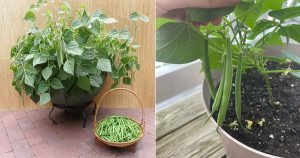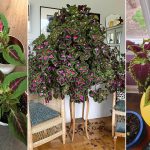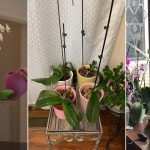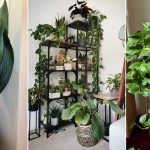It’s nice to talk about great plant combinations. Or how to select the right pot. But if you don’t use good dirt in a container garden, you might as well be putting lipstick on a pitbull, pigs, and probably hockey moms too. Lipstick and Vice Presidential candidates aside, it’s hard to get plants to do well if their roots are sitting in poor soil, or the wrong type of soil. So, here’s the dirt on dirt…
Don’t Use Dirt in a Container Garden
What?! I must have lost my marbles right? How can my first bit of advice be to never use dirt? Simple. Dirt is the stuff that nature made all by her lonesome. You can find it in every single back yard in the country. It’s usually just fine for the needs of plants growing in the ground, but it is not right for plants growing in pots. For starters, it may have pests, diseases, weeds, etc in it. It is also likely to be too compacted for the good drainage container grown plants need. Finally, garden dirt doesn’t have enough nutrients in it for container grown plants, who can only use the tiny bit of soil in their pot for sustenance.
The stuff you want to use is called potting soil, or soilless mix. It doesn’t have any actual dirt in it at all. Potting soil is comes in bags from the nursery. It contains bits of decomposed leaves and bark, perlite (the tiny white pebbles), peat moss, and sand. Oftentimes, in addition to the ingredients I’ve already mentioned, potting soil will have time released fertilizer, bat guano, worm castings, lime, or any number of other things mixed in to make the soil richer and keep its pH balanced.
What to Look For
Good quality potting mixes will not be cheap. If you find a bag that is being sold for $1.99 I will bet my first born child that the garden center is either having a going out of business clearance sale or the bag you are looking at is not good quality. Or maybe you’re looking at a really small bag.
For starters, good quality mixes will tell you what’s used in the mix. Here are some ingredients to look for:
- Sphagnum peat moss, sedge peat, or coconut coir (coconut coir is an environmentally friendly alternative to peat)
- Composted, aged forest products
- Sand
- Vermiculite
- Perlite
- Charcoal
- Wetting agent and water-holding polymer
- Lime for balancing the pH
Just because a bag of potting mix doesn’t list every one of the above ingredients doesn’t mean that it’s bad. For example, not every potting mix will need a wetting agent or lime (both are used to correct specific problems that not all mixes have). But the ingredients I listed are common, and if you see several of them listed, the mix you are looking at is headed in the right direction.
When you look at the actual potting mix, it should be fluffy. If you see or can feel that the mix has formed hard clumps inside, put it back on the shelf. If the potting soil can do that while inside a bag, imagine what it will do when it goes through the watering/drying out cycle, or is subjected to hot temperatures in the middle of summer.
My personal preference is to pick a mix without any fertilizer. I want to be able to control the amount of fertilizer and the type used. I want to know exactly what fertilizer went where and when. But if you’re not that picky, I recommend choosing one with a time released fertilizer and then applying more time released fertilizer in about half the time recommended on the bag (so if it says that there is enough fertilizer for 3 months, apply more in about a month and a half to two months).
This info should get you started, but come back tomorrow for info on chosing specific potting mixes for specific types of plants, and show up on Thursday for the dish on keeping your potting soil in good shape with fertilizers and compost.




